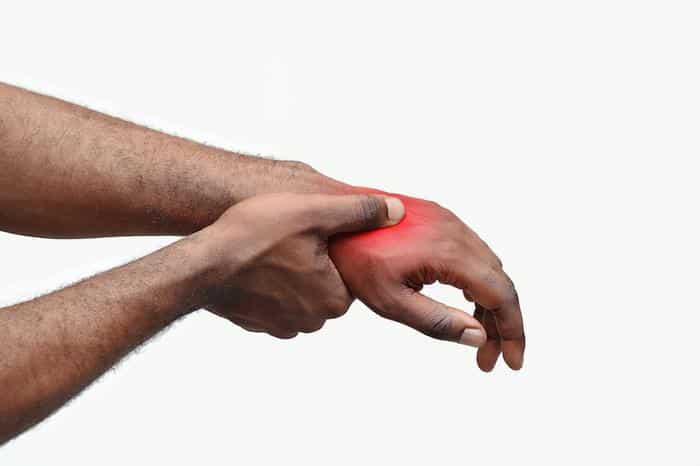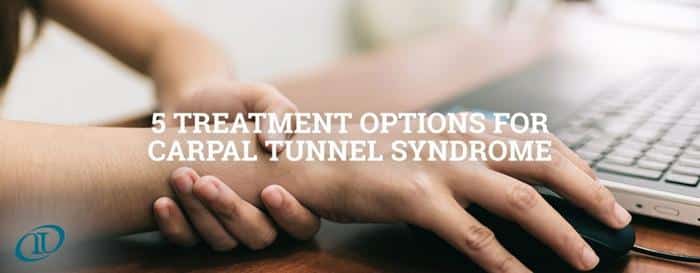With every strum of the strings, I felt a tingling whisper and then a relentless numbness in my fingers. Little did I know, this was the onset of carpal tunnel syndrome—a stark reminder that my passion for guitar needed careful nurturing as much as my music did. It’s not just a health concern; it’s an unexpected pause in a musician’s journey to express through melody. Exploring the intricacies of this condition, I unearthed a connection between *ergonomics* and musicians’ health, particularly for guitarists.
Allow me to share insights drawn from research, as well as from my own experiences, in order to shed light on why carpal tunnel syndrome affects guitarists disproportionately and how you, too, can protect yourself. By understanding the ergonomic principles and recognizing the signs early, you can safeguard your ability to create music without compromise. Together, let’s discover how adapting our practices and instruments can transform the way we play, ensuring our musical journey continues with health—and passion—intact.
What is Carpal Tunnel Syndrome?

As a designer engrossed in the intricate art of instrument ergonomics, I often encounter individuals who are puzzled by their unexplained hand discomfort. Did you know that carpal tunnel syndrome can affect up to 10 million Americans, often without them realizing it? This pervasive condition stems from pressure on the median nerve, which runs through the narrow carpal tunnel in the wrist. The syndrome manifests as tingling, numbness, or weakness in the hand, common *symptoms of carpal tunnel* that can be debilitating, particularly for musicians like guitarists.
My exploration into instrument design has underscored the impact of *repetitive strain injury*, a frequent culprit in developing carpal tunnel syndrome. Many guitarists repeat intricate hand movements and hold static hand positions for extended periods, unknowingly placing stress on their wrists. Over time, this can lead to inflammation and constriction within the narrow passage where the median nerve resides.
Understanding these mechanics is not merely academic for me—it’s a commitment I have to the passionate musicians who seek both comfort and performance excellence. By addressing these critical *symptoms of carpal tunnel*, we not only prevent its onset but empower guitarists to play without compromising their well-being. Join me as we delve deeper into how carpal tunnel syndrome affects guitarists specifically and reveal actionable insights to mitigate its effects, ensuring each strum and chord is pain-free and harmonious.
Why Does Carpal Tunnel Syndrome Affect Guitarists?

Is your love for playing guitar costing you your wrist health? As a seasoned luthier and guitarist, I’ve dedicated years to understanding the intimate relationship between a musician and their instrument. The allure of releasing beautiful melodies can sometimes overshadow the physical toll it takes. Carpal Tunnel Syndrome (CTS) is a common affliction among guitarists, and understanding why it affects us so profoundly is the first step to mitigating it.
Carpal Tunnel Syndrome occurs when the median nerve, which runs from the forearm to the palm, becomes compressed. This condition is common among guitarists due to the repetitive nature of playing. The finger movements and wrist positions that are central to guitar playing can create significant stress on the wrist. This is where the issue of guitarist injuries arises; frequent bar chords, fast shredding, and prolonged sessions can all contribute to wrist pain and ultimately, CTS.
My journey in instrument design and playability has shown me firsthand how simple changes can make a massive difference. I’ve seen how certain playing habits can exacerbate these problems. The angle at which one holds the wrist, the pressure applied to the strings, or even the grip on a pick—all small details that can lead to wrist pain management issues. Addressing them not only enhances performance but also safeguards your ability to continue playing in the long term.
Who is at Risk of Developing Carpal Tunnel Syndrome?

As a long-time luthier, I’ve witnessed firsthand how the nuances of guitar playing can significantly affect musician health. It’s not just about the hours spent practicing—it’s the intricate dance between technique and endurance that often goes unnoticed. Could your playing style be putting you at greater risk than you realize? This is a question worth pondering for guitarists dedicated to their craft.
Players who gravitate toward styles involving rapid finger movements or extended position holds might unknowingly be courting carpal tunnel syndrome. These techniques, while musically engaging, can place an undue strain on your wrist and hand muscles. Factors such as the repetitive motion of wrists and fingers, coupled with poor posture, can exacerbate this risk.
Furthermore, those who haven’t qualified their instrument setup to suit their personal playing habits—like opting for a neck that doesn’t align with their natural grip—are potentially setting the stage for discomfort. Therefore, understanding these subtleties and proactively adjusting your playing environment can be crucial in preventing this common ailment among guitarists.
How to Prevent Carpal Tunnel Syndrome While Playing Guitar
Ergonomic Guitar Techniques

What if small changes in your technique could spare you years of pain? As a luthier with decades of experience, I’ve observed firsthand how simple, ergonomic guitar techniques can make a world of difference for musicians. By incorporating proper posture and grip, you can *significantly reduce the risk* of developing repetitive strain injuries, such as carpal tunnel syndrome. My journey through lutherie has enriched my understanding of the intricate dance between musician and instrument, leading to innovative strategies that prioritize both creativity and health.
Many guitarists overlook the subtlety of ergonomics, focusing instead on speed and style. However, mastering ergonomics is a powerful foundation for long-term playing. Adjust your wrist angle to avoid excessive bend, use a strap to hold your guitar at a comfortable height, and ensure your fingers move fluidly without tension. Such adjustments not only offer immediate comfort but also integrate seamlessly into your practice, contributing profoundly to *carpal tunnel relief strategies*.
As you explore further, incorporating these tips can pave the way for not only safer playing but a deeper, more *sustainable connection* with your guitar. Let’s delve into how the right guitar setup can amplify these benefits.
Guitar Setup for Comfort

Have you ever considered how your guitar’s setup impacts your wrist health? For those of us familiar with guitar intricacies, it’s clear how a well-adjusted instrument can distinctly influence playing comfort and reduce strain. Drawing from my background in instrument construction, I’ve seen firsthand how a thoughtfully configured setup mitigates the risk of guitarist injuries, like carpal tunnel syndrome. The *right setup is crucial*; it ensures optimal hand positioning and *minimizes strain* on the wrists and fingers.
Start by adjusting your guitar’s action—the distance between the strings and the fretboard. **Lower action** can reduce the force required to press the strings, alleviating unnecessary tension in your wrist. Additionally, consider the **neck profile**; a shape suited to your hand size promotes better ergonomics. Regularly refining these elements makes the physical act of playing more seamless, ultimately promoting wrist health.
In the journey of mastering the guitar, ensuring a setup tailored for comfort is not merely an option—it’s a necessity. By investing time into your guitar’s setup, you not only enhance your playing experience but also effectively contribute to preventing debilitating conditions like carpal tunnel syndrome.
Coping Strategies for Guitarists with Carpal Tunnel Syndrome
Rest and Recovery Techniques

As a guitarist intimately familiar with the challenges of carpal tunnel syndrome, I’ve learned firsthand the significance of integrating rest and recovery into my playing routine. How can recognizing the need for rest save your playing career? This question resonates deeply, underscoring the perilous journey we navigate between passion and pain. In my professional experience, acknowledging the body’s cries for respite not only mitigates immediate wrist pain but sustains our long-term musical pursuit.
Implementing effective recovery techniques begins with simply listening to your body. Incorporating regular breaks, practicing relaxation techniques, and prioritizing adequate sleep are all fundamental. On days when pain flares, applying ice can reduce inflammation, while gentle stretching helps maintain mobility. Sophisticated gadgets like ergonomic wrist supports or compression gloves also offer relief. Rest is not just a passive activity but a vital strategy for longevity in our craft.
Integrating these approaches effectively enhances the broader theme of coping strategies for guitarists managing carpal tunnel. By emphasizing regular recovery as much as playing, we can steer our passion back to the fore, ensuring a future rich with music, despite the challenges of carpal tunnel syndrome.
Rehabilitation Exercises for Relief

As a guitar player, developing carpal tunnel syndrome can feel like an insurmountable setback. In my journey, I deeply explored the ways rehabilitation exercises influence recovery and playing techniques. Could targeted exercises be the key to reclaiming your guitar skills? Through the studies of body mechanics and instrument interaction, I discovered that specific exercises not only alleviate discomfort but also refine playing technique.
Rehabilitation exercises are a cornerstone of coping strategies for guitarists with carpal tunnel syndrome. Performing wrist stretches and finger movements optimally manages symptoms and fortifies muscles, enhancing both resilience and dexterity. Understanding the intricacies of how our hands interact with the guitar is pivotal. Strategic exercises focus on muscle endurance and flexibility, crucial in accommodating prolonged sessions without strain.
These practices also enhance overall technique by promoting smoother, effortless movements — essential for intricate riffs and sustaining long jam sessions. Incorporating these exercises into your routine, tailored by expert guides or therapists, can be transformative, bridging the gap between temporary relief and sustained improvement. As we advance into other treatment options for carpal tunnel, remember that rehabilitation is one vital component in our toolkit.
What Treatment Options are Available for Carpal Tunnel Syndrome?

Is surgery the only option for treating carpal tunnel syndrome? This question often looms large for guitar players, myself included, concerned about maintaining our passion for music without surgical intervention. Thankfully, the reality is more promising than it might initially seem. Over the years, working closely with specialists and exploring various treatment modalities has enriched my understanding of how to manage this condition effectively while minimizing the need for surgery.
For many, non-invasive treatment options for carpal tunnel syndrome are a viable and effective first step. These can include wrist splints worn during the night to immobilize the joint and reduce strain. Splinting has been an invaluable tool in my personal journey, offering relief and reducing symptoms significantly. Physical therapy, focusing on strengthening and stretching exercises, has also played a crucial role in maintaining my hand functionality. These exercises, combined with strategic pauses during guitar practice, can help prevent further aggravation of the condition.
Moreover, options such as corticosteroid injections provide temporary relief and reduce inflammation, offering a window of respite for healing. Of course, surgery remains a critical option when these conservative treatments fail to alleviate persistent, severe symptoms. However, informed decision-making, armed with a comprehensive understanding of these alternatives, can empower guitarists to explore these non-surgical pathways first. With the right approach and timely intervention, it is possible to manage carpal tunnel syndrome and continue playing with passion and precision.
Personal Experiences: Guitarists Sharing Their Journey

As a lifelong guitarist who has navigated the peaks and valleys of musician health, I have witnessed firsthand the trials of guitarist injuries that sideline even the most passionate. The guitar has been my companion, my escape, and often my greatest challenge. It’s led me to not only explore the harmonies of music but also the depths of physical endurance and adaptation. Among these challenges, carpal tunnel syndrome has been a particular nemesis, rearing its unwelcome head during crucial moments in many guitarists’ careers.
What can we learn from those who’ve faced the struggles of playing through injury? This question resonates deeply with me and countless others who’ve gripped their guitars, determined to play despite the pain. From my vantage point, the stories of fellow musicians are awe-inspiring repositories of resilience and innovation. I’ve listened to guitarists like Sarah, whose journey through the throes of carpal tunnel impelled her to adapt her grip, seeking new ergonomic techniques that would allow her to play on. Or David, who found solace and healing through carefully curated rehabilitation exercises that became integral to his recovery routine.
These personal narratives, embedded with trial and triumph, don’t just deepen our understanding of injury. They create a community of shared wisdom, reminding us that while the path to managing guitarist injuries is uniquely personal, it is one we traverse together. Connecting through these shared stories empowers us all to keep striving, playing, and sharing in the music we cherish.
FAQs
What are the symptoms of carpal tunnel syndrome for guitar players?
Guitar players may experience symptoms such as tingling, numbness, or weakness in the fingers and hand, often due to repetitive motions and pressure on the median nerve.
How can guitar players prevent carpal tunnel syndrome?
Guitar players can prevent carpal tunnel syndrome by practicing proper hand positioning, taking regular breaks during practice sessions, and performing hand and wrist strengthening exercises.
What are effective treatment options for carpal tunnel syndrome?
Treatment options include wrist splinting, physical therapy, ergonomic adjustments, anti-inflammatory medications, and in more severe cases, surgical intervention.
Can hand exercises help manage carpal tunnel syndrome?
Yes, hand exercises can improve strength and flexibility, helping to alleviate symptoms and prevent further injury.
Should I stop playing guitar if I have carpal tunnel syndrome?
It is advisable to reduce playing time and seek medical advice to treat the condition effectively without permanently stopping guitar playing.
Conclusion
Have the insights gained in this guide inspired you to take charge of your guitar playing health? As a guitarist, understanding and implementing effective carpal tunnel relief strategies is not just beneficial—it’s crucial for sustaining your musical journey. This article has equipped you with detailed information on how carpal tunnel syndrome affects us as musicians and why it’s vital to address it proactively. I’ve also shared ergonomic techniques and optimal guitar setups to prevent injuries and highlighted rehabilitation exercises and treatment options available for managing symptoms.
In conclusion, R.M. Mottola drives home the necessity for awareness and proactive measures in musician health, reiterating that knowledge is a vital step towards pain-free play. By embracing these strategies, you’re not only preserving your ability to perform but also ensuring your passion for guitar remains intact. Let these insights guide you in creating a healthier, more sustainable relationship with your instrument.

R.M. Mottola, an engineer-turned-luthier, revolutionizes stringed instrument design with his deep focus on acoustics and ergonomics since 1994. As editor of the Savart Journal and a key contributor to American Lutherie, Mottola merges science with artistry in lutherie. He enriches the field with his extensive knowledge, shared through his Liutaio Mottola website, making him a beacon in the world of modern instrument craftsmanship.
